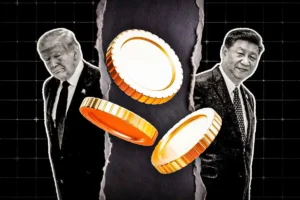Cardano’s Ouroboros Leios: A New Era Ahead
Introduction to the Ouroboros Leios Update
Charles Hoskinson, the founder of Cardano, has recently spotlighted the upcoming changes surrounding the Ouroboros Leios update. This advancement is critical as it signifies Cardano’s continual evolution in the blockchain space. With Hoskinson revealing plans to introduce AI agents for network stress-testing, the Cardano community is buzzing with anticipation. This article delves into the nuances of the Ouroboros Leios update and what it means for the Cardano ecosystem moving forward.
Enhancing Scalability with AI Integration
The introduction of AI agents in the Ouroboros Leios protocol is groundbreaking. According to Hoskinson’s announcement, these agents will simulate trading amongst themselves, serving as a tool for intensive stress-testing of the network. The use of AI enables the processing of real-time data and quick decision-making, essential for evaluating the blockchain’s speed and security. By creating a testnet populated with these virtual agents, Cardano aims to analyze performance under various scenarios before real assets are introduced. This proactive strategy is pivotal, as it aims to ensure that the platform can handle increased transaction volumes in the future.
Understanding Ouroboros Leios
Ouroboros Leios represents a significant redesign of Cardano’s original consensus protocol. This transformative upgrade is still in its prototyping phase but is projected to achieve markedly improved scalability and transaction throughput. The primary goal of this update is to facilitate faster block processing, positioning Cardano to host decentralized applications (DApps) on a global scale. Importantly, this upgrade is not merely about speed; it also emphasizes maintaining the blockchain’s inherent security and decentralization. The meticulous, research-driven approach adopted by Cardano indicates that full development could take another year or two, reflecting their commitment to quality.
The Competitive Landscape: Cardano vs. Ethereum
As Cardano advances with Ouroboros Leios, it finds itself in competition with Ethereum, which is gearing up for its own significant upgrade, dubbed Pectra. This upcoming update aims to enhance Ethereum’s scalability and security, promising to streamline staking processes and improve overall usability. However, Pectra has not been without its challenges, especially regarding implementation on its testnets. Despite these hurdles, the Ethereum community remains optimistic that this update will rejuvenate the network and expand its capabilities, especially in facilitating lower transaction fees across its Layer-2 solutions.
The Potential Impact of Ouroboros Leios
Both Ouroboros Leios and Ethereum’s Pectra are positioned to make substantial impacts on their respective ecosystems. As Cardano sets its sights on launching the Leios mainnet, the implications for decentralized finance (DeFi) are massive. The advancements in transaction speed and enhanced security can provide a more robust infrastructure for DeFi applications, potentially attracting more developers and users to the Cardano platform. As these two upgrades are rolled out, enthusiasts and investors alike are eager to see how they will influence the overall blockchain landscape.
Conclusion: A Glimpse into the Future
The introduction of Ouroboros Leios is more than just a technical upgrade; it represents an ambition to redefine what Cardano can accomplish in the realm of blockchain technology. By leveraging AI for network stress-testing, Cardano is not just looking to boost its scalability but also solidify its position as a leading platform for DApps and DeFi. As both Cardano and Ethereum move forward with their respective upgrades, the industry will be watching closely to gauge their effects, competition, and ultimately, their contributions to the future of decentralized technologies. Cardano’s strategic approach and innovative features signal a promising future as the blockchain landscape continues to evolve.
















